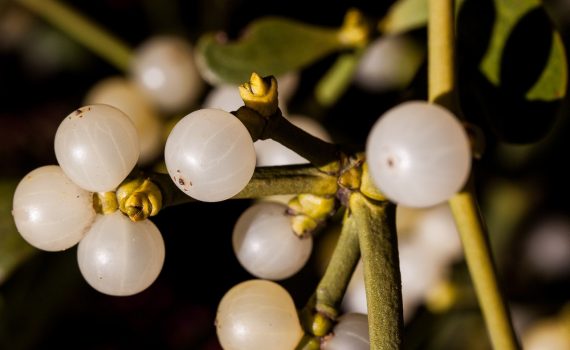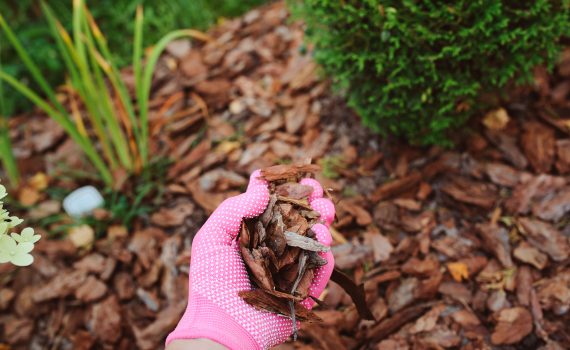Spring is a time of vibrant renewal in the natural world. After the quiet slumber of winter, the Earth awakens with a burst of color and life. Bare branches transform into verdant canopies, and delicate flowers unfurl their petals towards the warming sun. This seasonal transformation is more than just a pretty sight – it’s a crucial process for plants, especially trees, that have spent months in a state of dormancy.
Tree dormancy is a clever survival strategy that allows trees to conserve energy during harsh winter conditions. But how do these seemingly still giants know when it’s time to break free from their slumber and usher in a season of growth?
Let’s delve into the fascinating science behind a tree’s spring awakening, and explore what it means for your own garden.
Understanding Tree Dormancy
Tree dormancy is nature’s way of giving trees a much-needed rest during challenging periods. Just like bears hibernate, trees enter a state of suspended growth to conserve energy and protect themselves from the harsh realities of winter. This strategic slowdown allows them to weather freezing temperatures, strong winds, and limited water availability.
There are actually two main types of tree dormancy that trees experience:
Endodormancy
This is an internal clock that regulates growth, regardless of external conditions. Even if a warm spell graces a winter day, a tree in endodormancy won’t be fooled into sprouting new leaves. It needs to fulfill a specific chilling requirement, accumulating a certain amount of cold temperatures (usually just above freezing) over a set period. This ensures the tree doesn’t waste precious energy on new growth that could be damaged by a late frost.
Ecodormancy
Unlike endodormancy, ecodormancy is triggered by external cues like shortening daylight hours and dropping temperatures. These environmental signals prompt the tree to initiate physiological changes that prepare it for winter. This might involve reducing chlorophyll production (the pigment that gives leaves their green color), thickening cell walls for increased frost resistance, and storing starches and sugars for energy reserves.
As winter approaches, trees undergo a series of internal transformations. They start producing antifreeze-like compounds to protect their cells from freezing, and they break down starches and sugars into a more usable form for energy during tree dormancy. Additionally, they may shed their leaves to minimize water loss through transpiration (the process by which plants release water vapor through their leaves). This remarkable preparation allows trees to endure the winter months and emerge ready to flourish come spring.
The Awakening Process
Once the harsh grip of winter loosens, a fascinating dance between internal and external factors triggers a tree’s emergence from dormancy. This awakening process is a complex interplay of environmental cues and biochemical changes.
Environmental Cues: The Call to Action
Nature sends out a multi-pronged message to signal the end of tree dormancy. The most prominent cues are:
- Temperature Fluctuations: As winter wanes, fluctuating temperatures, particularly warmer days followed by cooler nights, act as a wake-up call for trees. These fluctuations help break down the chilling requirement of endodormancy.
- Chilling Hours: Each tree species has a specific number of chilling hours, or the total amount of time spent below a certain temperature threshold (usually just above freezing). Accumulating the required chilling hours is crucial for breaking endodormancy and ensuring proper bud development.
- Daylight Length (Photoperiod): As days lengthen with the approach of spring, trees receive a vital signal related to light availability. This photoperiod, or the daily duration of sunlight, influences the production of hormones that play a key role in bud break.
Biochemical Symphony: Orchestrating Growth
The environmental cues trigger a cascade of biochemical reactions within the tree. Here’s a closer look at the key players in this internal symphony:
- Breaking the Chilling Requirement: Warmer temperatures and fluctuating cold periods activate specific enzymes within the buds. These enzymes break down growth inhibitors that keep the tree dormant.
- Hormonal Surge: With the chilling requirement fulfilled, photoperiod triggers the production of growth hormones like gibberellins. These hormones act as messengers, stimulating cell division and initiating bud development.
- Fueling Growth: As dormancy breaks, the tree taps into its stored energy reserves – the starches and sugars converted from fall. These reserves provide the initial fuel for new leaf and shoot growth until the tree can photosynthesize again.
It’s important to note that these cues and processes often work in concert. For example, a longer period of chilling can sometimes compensate for shorter daylight hours, allowing a tree to break dormancy even with slightly less sunlight. This intricate interplay ensures that trees awaken at the optimal time for growth and survival in their specific environment.

The Impact of Climate Change on Tree Dormancy
Our changing climate is disrupting the delicate balance of dormancy. Rising global temperatures and fluctuating weather patterns are affecting the environmental cues that traditionally signal a tree’s awakening.
- Earlier Springs and Warmer Winters: Warmer winters with fewer chilling hours can lead to trees breaking dormancy prematurely. This can leave them vulnerable to late frosts, which damage emerging buds and flowers.
- Disrupted Photoperiod: Erratic weather patterns with unexpected warm spells can disrupt the photoperiod signal. This can confuse trees and lead to asynchronous bud development, reducing overall growth and fruit production.
Trees are not passive players in this changing environment. Here are some adaptation strategies they’re employing:
- Shifting Tree Dormancy Requirements: Some tree species may be evolving to require fewer chilling hours, allowing them to adapt to warmer winters.
- Delayed Bud Break: In response to unpredictable late frosts, some trees are delaying bud break to minimize damage from unexpected cold snaps.
Preparing Your Garden for Spring
Understanding tree dormancy can empower you to become a better steward of your garden trees.
Here’s how:
- Pruning: Avoid pruning early-blooming trees in late winter or early spring, as this can stimulate new growth vulnerable to frost damage. Prune these trees after they have flowered and the risk of frost has passed.
- Fertilizing: Wait until after the threat of frost has subsided before applying fertilizer. Early fertilization can encourage premature growth and leave trees susceptible to frost damage.
- Watering: As dormancy breaks and new growth emerges, trees require consistent moisture. Monitor soil moisture levels and water deeply during dry periods.
Protecting Early Bloomers from Frost
For trees that tend to bloom early, here are some steps you can take to shield them from late frost damage:
- Selection: Consider planting late-blooming varieties of fruit trees or ornamental trees less susceptible to frost damage.
- Row Covers: Before a predicted frost event, drape a breathable row cover fabric over the tree to trap heat and protect blossoms. Ensure proper support for the fabric to avoid smothering the tree.
- Water Sprinkling: Setting up a sprinkler system to lightly coat the tree with water just before sunrise can offer some frost protection. As the ice melts, it releases heat, helping to maintain a slightly warmer temperature around the blooms.
By understanding the dance between dormancy and awakening, and by adapting your gardening practices accordingly, you can give your trees the best chance to flourish throughout the growing season.
Supporting Biodiversity Through Garden Choices
Spring awakening isn’t just about your trees; it’s a celebration of life for a whole host of creatures. By making thoughtful choices in your garden, you can create a haven for local wildlife and contribute to a more biodiverse ecosystem.
Planting for Harmony: Native and Adaptive Trees
The best way to support wildlife during spring awakening is to choose native or well-adapted tree species. These trees are naturally synchronized with the local climate and ecological cycles. They provide:
- Food Sources: Native trees produce flowers, fruits, and seeds that are specifically adapted to nourish local wildlife populations. Caterpillars feast on native leaves, while birds relish the bounty of fruits and berries.
- Habitat: The architecture of native trees provides nesting and shelter for birds and other animals. Hollow branches become homes for cavity-nesting birds, while dense foliage offers a safe haven for smaller creatures.
Diversity is Key
Embrace a diverse planting strategy in your garden. Trees that flower at different times throughout spring offer a continuous buffet for pollinators like butterflies, bees, and hummingbirds. Early bloomers provide a vital first meal for emerging insects, while later bloomers sustain them as the season progresses. This staggered flowering creates a “pollinator buffet” that ensures a steady source of food throughout spring and early summer.
Understanding Bloom Cycles: A Pollinator’s Paradise
Understanding the specific bloom cycles of different trees allows you to create a haven for pollinators. Here are some tips:
- Research: Identify native trees in your region that flower at various points in spring. Local nurseries or gardening organizations can be a valuable resource.
- Plan for Succession: Plant a variety of trees with overlapping bloom times to create a continuous flowering sequence. This ensures a constant supply of nectar and pollen for pollinators throughout the awakening period.
By consciously choosing native and adaptive trees, incorporating diverse planting strategies, and catering to the bloom cycles of different species, you can transform your garden into a vibrant hub of life, supporting a thriving ecosystem during spring and beyond.
By making informed choices about tree selection, pruning practices, and watering habits, we can contribute to the health and longevity of our trees. Furthermore, by embracing diverse planting strategies and fostering a pollinator-friendly environment, we can create gardens that not only flourish throughout the spring season but also support a thriving ecosystem.
Spring is a time to revel in the natural world’s awakening. Take a moment to observe the unfolding drama in your own backyard. Witness the subtle changes in your trees – the swelling buds, the delicate emergence of leaves, and the vibrant burst of flowers. By participating in this annual transformation, we become part of a grand ecological story that unfolds with every season.
Contact Sexy Trees for your Spring Tree Care Needs
As spring approaches, consider enlisting the help of a professional arborist to ensure your trees are well-equipped for the growing season. Sexy Trees offers comprehensive spring tree care services, from expert pruning and fertilization to disease and pest control.
Contact Sexy Trees today and let’s work together to nurture the health and beauty of your trees, for a vibrant spring and beyond!
 Bringing Sexy Back Into Your Yards
Bringing Sexy Back Into Your Yards 



